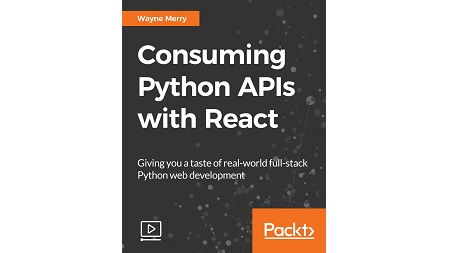
English | MP4 | AVC 1920×1080 | AAC 48KHz 2ch | 2h 21m | 366 MB
Bring your Python full stack web development experience full circle by integrating your Django backend with a React frontend
One of the best things about Python is that it fits well into any web developer’s skill set. With the help of Django, Python’s high-end web framework, you can rapidly develop your own websites and build web APIs that are clean and easy to maintain and re-write, all while allowing you to integrate your Python code with powerful JavaScript frameworks such as React.js.
You will start by quickly setting up your JavaScript tools and Node.js, as well as React.js for a Bookmarking Application project. After that, you will put together your basic frontend code for interacting with your Django backend. You will learn to build and use React components for your application’s UI, and work with your React code’s data and state to determine how your application behaves. You’ll also explore routing and event handling for your application. From there, you will delve into backend interaction details, such as authentication for login. You will learn to consume your Django resources and also create, update, and delete item data.
You’ll also learn specific tasks such as managing your bookmarks and counting and collecting likes and comments on your bookmarks. By the end of this course, you will have successfully integrated your Python web application’s backend with a React.js frontend.
This course provides in-depth content balanced with tutorials that put the theory into practice, and focuses on giving you both the understanding and the practical examples that will bring your Python full-stack web development experience full circle, by integrating your Django backend with a React frontend
What You Will Learn
- Build Python APIs with React
- Setup Modern Tooling with Node.js and React
- Learn about React components, state and properties
- Obtain data from user input and third party APIs
- Test your React application
- Employ components for building User Interfaces that interface with your Django REST server
- Learn how to consume CRUD and custom REST operations from your React app to your Django REST server
- Learn how to consume CRUD and custom REST operations from your React app to your Django REST server
Table of Contents
Getting Started
1 The Course Overview
2 The Big Picture
3 Single-Page Applications and Frontend Frameworks
4 JavaScript Tooling and NodeJS
5 Setting Up React
Basic Frontend Code for Interacting with Your Django Backend
6 Employing Components for Building Your UI
7 Data and State
8 Routing
9 Testing
Frontend Details and Consuming Your Django RESTful API
10 Handling Authentication
11 Create and Read Operations
12 Routing and User Bookmarks
13 Updating Bookmarks and Notes
14 Bookmark Comments and Delete Operations
15 Custom REST Operations
16 Deployment Considerations
Resolve the captcha to access the links!